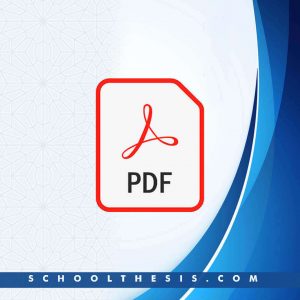
Economic Analysis of Irrigated Rice Production
Quick Navigation for Final Year Undergraduates, Masters (Thesis), and Ph.D. Dissertation Students Who Need Our Services on Their Research Works
DOWNLOAD FULL PDF WORK
Abstract on Economic Analysis of Irrigated Rice Production
The main focus of the study is on economic analysis of irrigated rice production in Kura local government area of Kano State, Nigeria. The Research was carried out in 10 selected villages in Kura local government area. The 10 villages were selected from the 26 villages in the local government and 10% of the farmers in each of the selected 10 villages were used as respondents. The study made use of primary data, collected through structured questionnaire. Descriptive statistics, multiple regression model, gross margin analysis were used as analytical tools. Farmers’ average age was found to be 43 years which represents an opportunity for more active years in the study area. The study revealed that farmers have 5 household size on the average. Farmers experience in cultivation of rice was an average of 25 years in the study area. Furthermore, land acquisition for the cultivation of rice is largely through inheritance with average farm size of 1.18 hectares. Most farmers do not have contact with extension agents and also about 42% of farmers have had access to credit between the ranges of ₦1000 to ₦10,000. About 73% of the farmers do not belong to any cooperative membership.
Farmers’ age, farming experience, farm size and credit if increased will lead to increase in output of rice. This average seed rate was about 11.18% – 28.94% lower than recommended rate of 80-100 kilogramme/hectare. Also, the inorganic fertilizer used was an average of 381.4kg/hectare which is lower than the recommended 730kg/hectare. The output level was however at an average of 6,516.95kg/hectare which is higher than the expected 3-6tonnes. Farm size, seed, fertilizer and agro chemicals were positive factors of production. Labour was negative which implies that an increase in the use of labour would decrease farm output. The sum of the elasticities of production of the five variable inputs was 1.055, indicating increasing returns to scale. The total variable inputs (seed, labour, fertilizer and agro-chemical) was estimated to be N142, 844.70/hectare. The gross farm return was N391, 017/ hectare. The gross margin per hectare was therefore, N248, 172.30. Late discharge of water, high cost of fertilizer and poor price at harvest time ranked highest in that order in the list of constraints faced by farmers in the study area. It was concluded that the production of irrigated rice was found to be profitable and has the potential of contributing to improved livelihoods of the farmers in the study area. It was therefore recommended that the Government should liaise with the appropriate authorities for decisions on water release schedule in consultation with farmers.
Chapter One of Economic Analysis of Irrigated Rice Production
INTRODUCTION
Background to the Study
Rice has been an important food for most people in sub-Saharan Africa particularly West Africa where the consumption of cereals mainly sorghum and millet has decreased while that of rice has increased as a result of shift in consumers’ preference, urbanization and increase in population. Rice is notably palatable and can digest easily (Cadoni and Angelucci, 2013). It is grown approximately on 3.7 million hectares of land in Nigeria, covering 10.6% of the 35 million hectares of land under cultivation, out of a total arable land area of 70 million hectares (Cadoni and Angelucci, 2013). Where 77% of the farmed area of rice is rain-fed, of which 47% is lowland and 30 percent upland (Cadoni and Angelucci, 2013). The range of grown varieties is diverse and includes both local (such as Dias, Santana, Ashawa, Yarsawaba, and Yarkuwa) and enhanced varieties of traditional African rice (such as NERICA) (Bayou 2009).
In Nigeria, demand for rice had been increasing at a much faster rate than in any other African countries since mid-1970 (FAO, 2001). Nigeria consumes 50 percent of the total 10 million metric tons of rice for which only 3 million metric tons is produced in Africa (Oryza marked report – Nigeria, 2004). Furthermore, during the 1960s, Nigeria had the lowest per capita annual consumption of rice in the West Africa sub region with an annual average of 3kg. Since then, Nigeria per capital consumption levels have grown significantly at 7.3 percent per annum (PCU, 2002). Consequently, per capital consumption during the 1980s average 18kg and reached 22kg in 1995 to 2000.
DOWNLOAD FULL PDF WORK
Disclaimer
This research material is intended for academic use only and should be used as a guide in constructing your research project and seminar presentation. You should never duplicate the content word for word (verbatim), as SCHOOLTHESIS.COM will not be held liable for anyone who does.
The purpose of publishing this material is to alleviate the stress of hopping from one school library to the next in search of research materials. This service is lawful because all educational institutions allow students to read past projects, papers, books, and articles while working on their own.
SCHOOL THESIS is merely giving this information as a research reference. Use the document as a reference or structure for your own research paper. This paper’s content should be able to assist you in coming up with new ideas and thoughts for your own study
Economic Analysis of Irrigated Rice Production research paper, should only be used as a guide.

